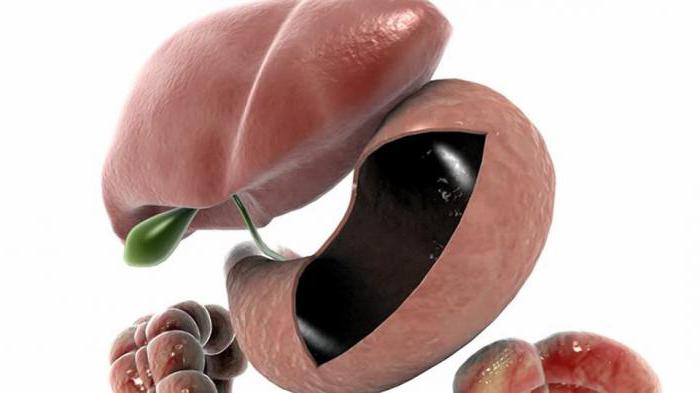Any living organism eats organic food, which is destroyed in the digestive system and is involved in cellular metabolism. And for a substance such as protein, digestion means complete cleavage to its constituent monomers. This means that the main task of the digestive system is the destruction of the secondary, tertiary or domain structure of the molecule, and then the elimination of amino acids. Later, protein monomers will be distributed by the circulatory system into the cells of the body, where new protein molecules necessary for life will be synthesized.
Enzymatic Protein Cleavage
Protein is a complex macromolecule, an example of a biopolymer consisting of many amino acids. And some protein molecules consist not only of amino acid residues, but also of carbohydrate or lipid structures. Enzymatic or transport proteins may even contain a metal ion. Most often, protein molecules are present in food, which are found in animal meat. It is also a complex fibrillar molecule with a long amino acid chain.
For the breakdown of proteins in the digestive system, there is a set of proteolysis enzymes. These are pepsin, trypsin, chemotrypsin, elastase, gastriksin, chymosin. The final digestion of proteins occurs in the small intestine under the action of peptide hydrolases and dipeptidases. This is a group of enzymes that break down the peptide bond of strictly specific amino acids. This means that for the destruction of the peptide bond between the residues of the amino acid serine, one enzyme is needed, and for the cleavage of the bond formed by threonine, another.
Protein digestion enzymes are divided into species depending on the structure of their active center. These are serine, threonine, aspartyl, glutamine and cysteine proteases. In the structure of their active center, they contain a certain amino acid, because of which they got their name.
What happens to protein in the stomach?
Many are mistaken in saying that the stomach is the main organ of digestion. This is a common misconception, since digestion of food is partially observed already in the oral cavity, where a small part of carbohydrates is destroyed. Here, their partial absorption occurs. But the main processes of digestion do occur in the small intestine. At the same time, despite the presence of pepsin, chymosin, gastrixin and hydrochloric acid, protein digestion does not occur in the stomach. These substances under the action of the proteolytic enzyme pepsin and hydrochloric acid denature, that is, lose their special spatial structure. Also, under the action of chymosin, milk protein is curdled.

If the process of protein digestion is expressed as a percentage, then approximately 10% of the destruction of each protein molecule occurs in the stomach. This means that in the stomach, not a single amino acid from the macromolecule is detached and is not absorbed into the blood. Protein only swells and denatures in order to increase the number of available places for the work of proteolytic enzymes in the duodenum. This means that under the action of pepsin, the protein molecule grows in volume, exposing more peptide bonds, which are then joined by proteolytic enzymes of pancreatic juice.
Protein digestion in the duodenum
After the stomach, processed and thoroughly ground food mixed with gastric juice and prepared for the next stages of digestion enters the duodenum. This is a section of the digestive tract, located at the very beginning of the small intestine. Here, further cleavage of molecules occurs under the action of pancreatic enzymes. These are more aggressive and more active substances that can split a long polypeptide chain.
Under the action of trypsin, elastase, chymotrypsin, carboxypeptidases A and B, the protein molecule splits into many smaller chains. In fact, after the passage of the duodenum, the digestion of proteins in the intestine only begins. And if expressed as a percentage, then after processing the food lump with pancreatic juice, proteins are digested by about 30-35%. Their complete "disassembly" to the constituent monomers will be carried out in the small intestine.
Results of pancreatic protein digestion
The digestion of proteins in the stomach and duodenum is the preparatory stage that is needed for the fragmentation of macromolecules. If a protein with a chain length of 1000 amino acids enters the stomach, then, at the exit from the duodenum, for example, 100 molecules with 10 amino acids in each will be obtained. This is a hypothetical figure, since the endopeptidases mentioned above do not divide the molecule into equal sections. Molecules with a chain length of 20 amino acids, 10, and 5 will be present in the resulting mass. This means that the crushing process is chaotic. Its goal is to simplify the work of exopeptidases in the small intestine as much as possible.
Digestion in the small intestine
For any high molecular weight protein, digestion is its complete destruction to the monomers that make up the primary structure. And in the small intestine under the action of exopeptidases, oligopeptides are decomposed into individual amino acids. Oligopeptides are the above-mentioned residues of a large protein molecule, consisting of a small amount of amino acids. Their splitting is comparable in energy costs to synthesis. Because the digestion of proteins and carbohydrates is an energy-intensive process, as is the absorption of the obtained amino acids by epithelial cells.
Parietal digestion
Digestion in the small intestine is called parietal, as it occurs on the villi - folds of the intestinal epithelium, where exopeptidase enzymes are concentrated. They attach to the oligopeptide molecule and hydrolyze the peptide bond. Moreover, for each type of amino acid there is an enzyme. That is, to break the bond formed by alanine, the enzyme alanine aminopeptidase is needed, glycine is glycine aminopeptidase, leucine is leucine aminopetidase.
Because of this, protein digestion takes a lot of time and requires a large number of digestive enzymes of various types. The pancreas is responsible for their synthesis. Its function suffers in patients who abuse alcohol. But to normalize the lack of enzymes, taking pharmacological preparations, is almost impossible.